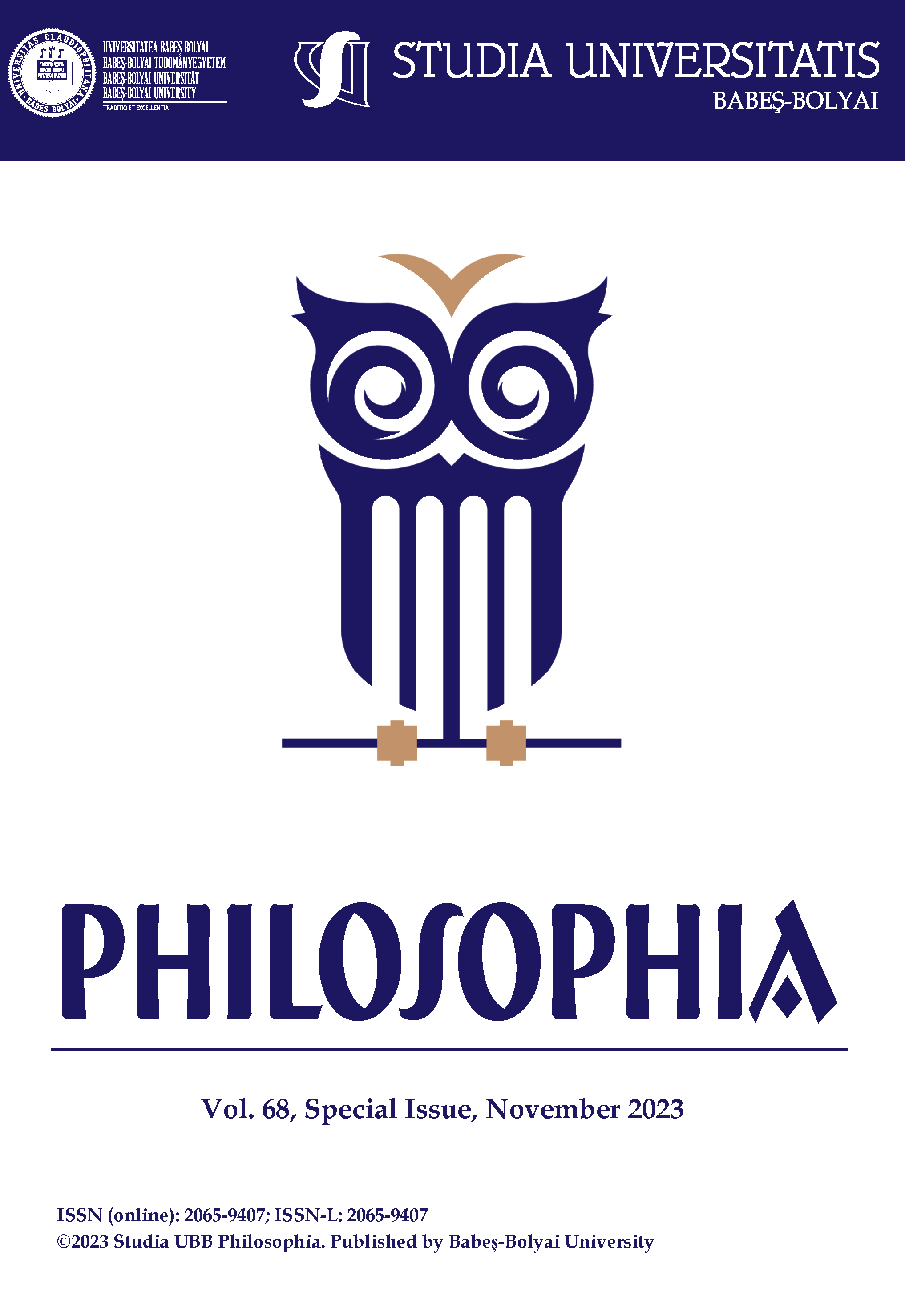Des images attaquées : la soupe sur les tableaux et le déclin de la contemplation
DOI:
https://doi.org/10.24193/subbphil.2023.sp.iss.01Keywords:
Kantian aesthetics, ethics, contemplation, natural beauty, autonomy of art, environmental activism.Abstract
Images under Attack: Soup on Paintings and the Decline of Aesthetic Contemplation.
In 2022, two cans of tomato soup were thrown over Van Gogh’s Sunflowers at the National Gallery in London by two climate activists. The aim of this paper is not to explain the motives behind the protest in terms of environmental activism, but to address the implications of this phenomenon for the status of artistic images in our time. The protest in question is one of the many symptoms of the fact that images associated with a pure state of gaze have become morally dubious due to a certain moralistic turn in contemporary discourses on art. Consequently, what seems to be lost in today’s movements of moralizing aesthetics, whether in art or in environmental activism, is not only the “aura” of an artwork, but also the idea that the contemplation of beauty in and for itself would provide a foundation for humans’ moral vocation. In a gaseous state of art (Y. Michaud) in which the transient effects of things are more important than their essence, the moralistic tendencies combined with the lack of moral foundations can no longer conceive of the ethical effects of images without explicit moral content, thus calling for a new form of heteronomy in art.
References
Benjamin, Walter, « L’œuvre d’art à l’époque de sa reproduction mécanisée », Zeitschrift für Sozialforschung, Herausgegeben im Auftrag des Instituts für Sozialforschung von Max Horkheimer, Jahrgang V/1936, Paris, Félix Alcan, 1937, pp. 40-68.
Bredekamp, Horst, Theorie des Bildakts. Frankfurter Adorno-Vorlesungen 2007, Berlin, Suhrkamp, 2010.
Carlson, Allen, Aesthetics and the Environment. The Appreciation of Nature, Art and Architecture, London & New York, Routledge, 2000.
Danto, Arthur C., The Transfiguration of the Common Place. A Philosophy of Art, Cambridge, Massachusetts & London, Harvard University Press, 1981.
Derrida, Jacques, La vérité en peinture, Paris, Flammarion, 1978.
Dufrenne, Mikel, Phénoménologie de l’expérience esthétique, tome 1, L’objet esthétique, Paris, P.U.F., 1953.
Ferry, Luc, Homo aestheticus : l’invention du goût à l’âge démocratique, Paris, Grasset & Fasquelle, 1990.
Gadamer, Hans-Georg, Gesammelte Werke, Band 1, Hermeneutik I: Wahrheit und Methode. Grundzüge einer philosophischen Hermeneutik, Tübingen, J.C.B. Mohr (Paul Siebeck), 1990.
Gadamer, Hans-Georg, Gesammelte Werke, Band 8, Ästhetik und Poetik I: Kunst als Aussage, Tübingen, J.C.B. Mohr (Paul Siebeck), 1993.
Hume, David, Selected Essays, Oxford, Oxford University Press, 1998.
Kant, Emmanuel, Critique de la faculté de juger, Paris, Flammarion, 2015.
Michaud, Yves, « L’art, c’est bien fini ». Essai sur l’hyper-esthétique et les atmosphères, Paris, Gallimard, 2021.
Rancière, Jacques, Le partage du sensible : esthétique et politique, Paris, La fabrique-éditions, 2000.
Rancière, Jacques, Malaise dans l’esthétique, Paris, Galilée, 2004.
Talon-Hugon, Carole, L’art sous contrôle : nouvel agenda sociétal et censures militantes, Paris, P.U.F., 2019.
Downloads
Published
How to Cite
Issue
Section
License
Copyright (c) 2023 Studia Universitatis Babeș-Bolyai Philosophia

This work is licensed under a Creative Commons Attribution-NonCommercial-NoDerivatives 4.0 International License.





